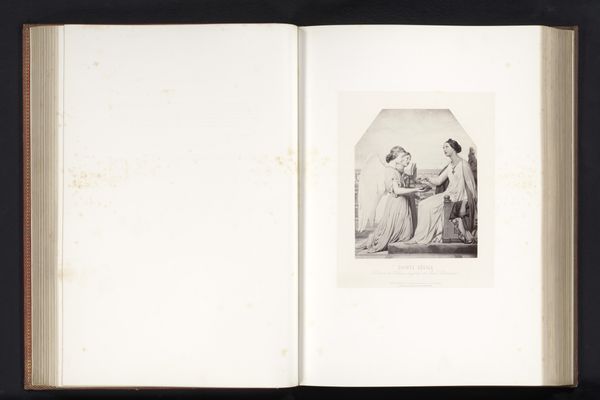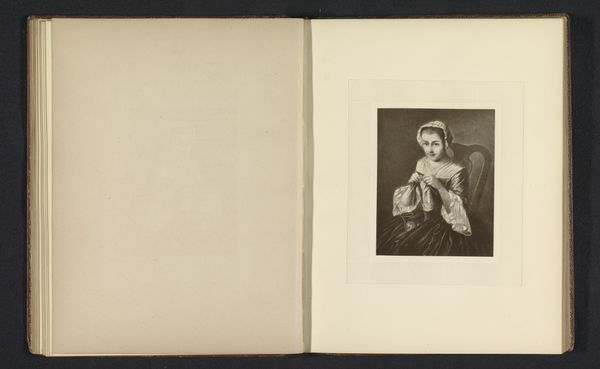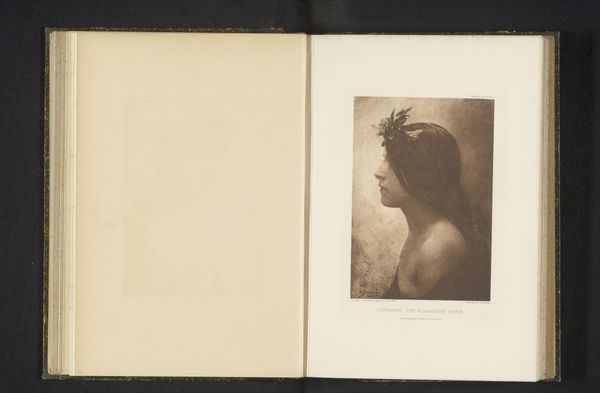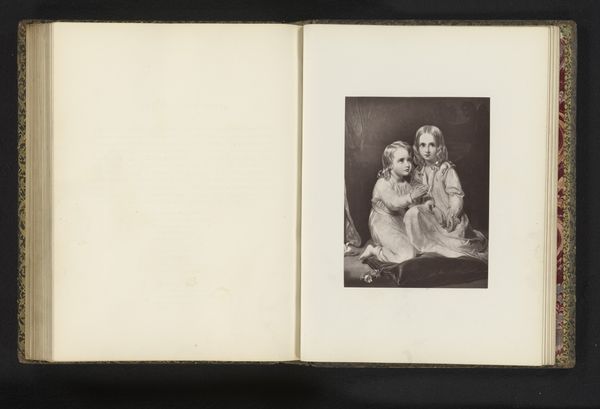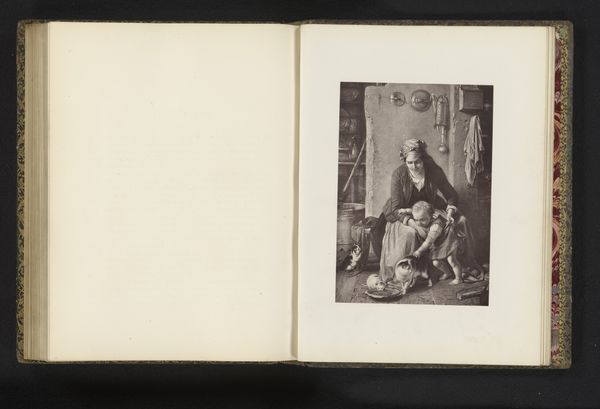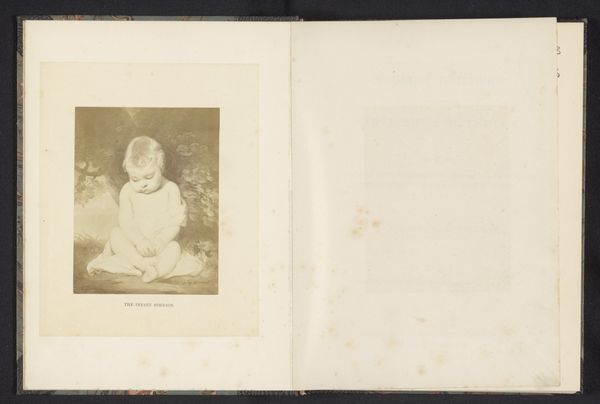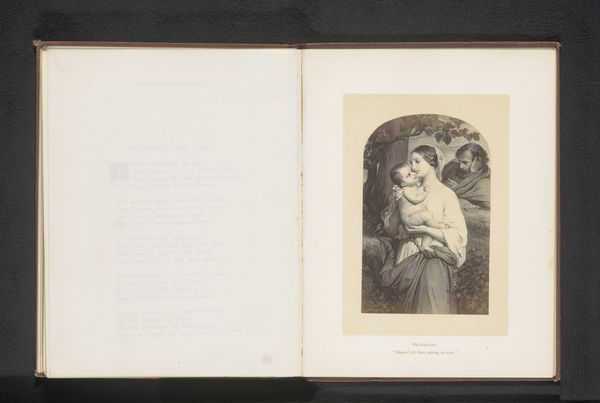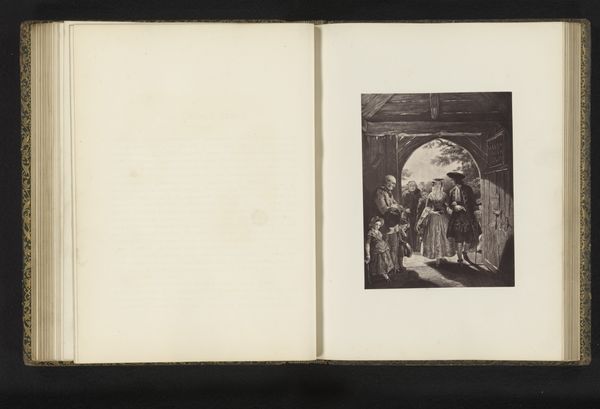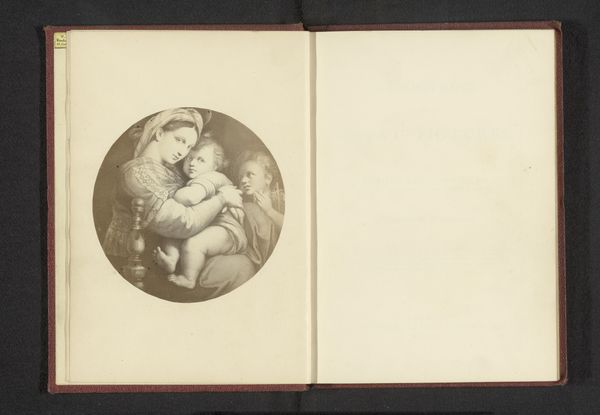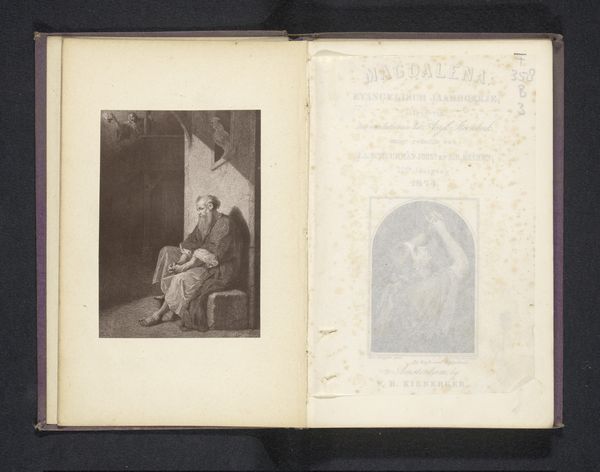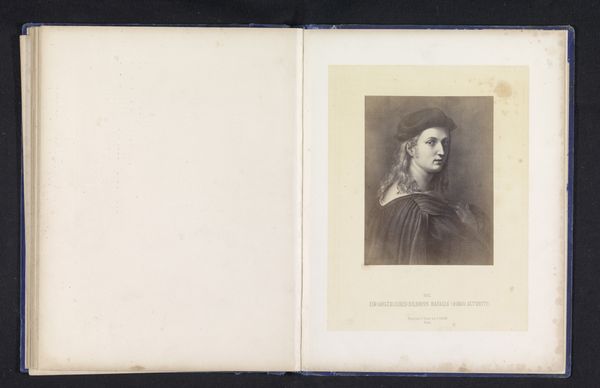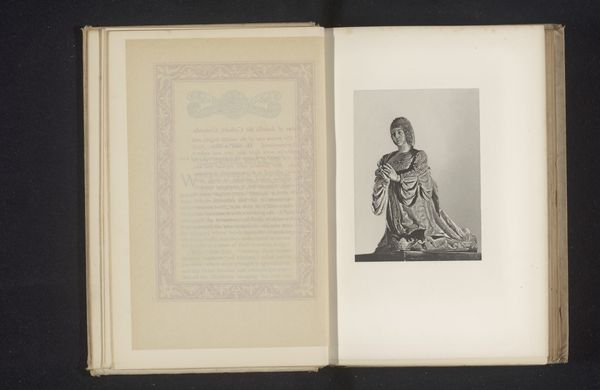
Fotoreproductie van een prent, voorstellende een vrouw met een lauwerkrans before 1883
0:00
0:00
anonymous
Rijksmuseum
print, paper, engraving
#
portrait
# print
#
classical-realism
#
paper
#
engraving
Dimensions: height 153 mm, width 120 mm
Copyright: Rijks Museum: Open Domain
Curator: Looking at this page from an old book, what's your first reaction to the image presented here? Editor: Melancholy, I think. The downward gaze and soft lines evoke a sense of quiet sadness or pensiveness. Is this work somehow related to classical depictions of grief or mourning, perhaps a literary trope or allegorical character made visual? Curator: That's perceptive. What we have here is a photographic reproduction of a print created before 1883, and its current home is the Rijksmuseum. Specifically, the medium is an engraving on paper. The title, "Fotoreproductie van een prent, voorstellende een vrouw met een lauwerkrans", which roughly translates to "Photographic reproduction of a print, depicting a woman with a laurel wreath." Editor: The laurel wreath… So, traditionally, a symbol of victory or status. The woman, in what appears to be classical dress, carries conflicting messages through symbols—a triumphant laurel against a demeanor of melancholy. Is it a common symbolic pairing, or are there social cues hidden in plain sight? Curator: I see it as more of an intentional duality that complicates rather than contradicts. The laurel is about aspiration and honor, yet her gaze suggests inner turmoil, a private struggle perhaps, belying outward appearance or assumed narrative of classical heroism. The cultural memory of victory is recontextualized here as inherently subjective. Editor: Interesting point. From a historical perspective, I wonder how accessible images such as this were in the 19th century? Was this particular rendering, now preserved in the Rijksmuseum, a widely circulated portrait aimed at broader consumption, or was it made for the pleasure of only an elite and small public? Curator: Good question. I would argue, it’s function transcends the purely decorative because its visual language touches on the complex psychology of heroism. The woman is relatable in ways a stoic or idealized victor could never be. Editor: Yes, and in that reading, perhaps the role of institutions like the Rijksmuseum lies in revealing not just the historical artistry of these images but also these deeply woven threads of cultural perception. Curator: Exactly, by engaging with the past's visual vocabulary we become more attuned to interpreting the present's, its propaganda, its anxieties, and its ever-shifting symbolic landscape.
Comments
No comments
Be the first to comment and join the conversation on the ultimate creative platform.
